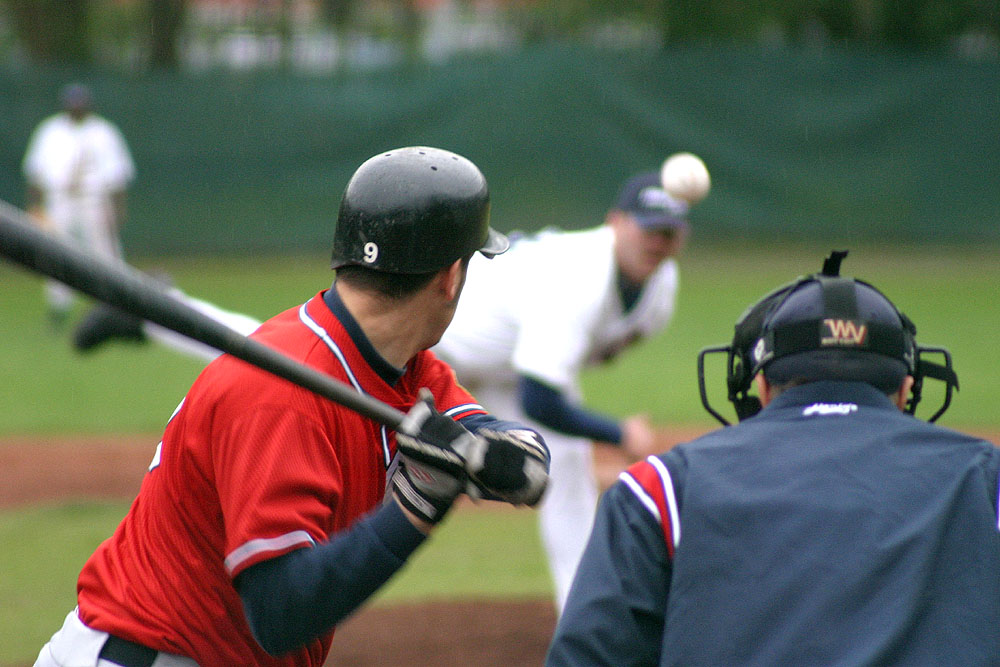
Over the years, baseball has changed from a game of speed and small ball to a game of power. Look at Barry Bonds, Alex Rodriguez, Mark McGwire, and Sammy Sosa. What do they all have in common? Aside from their steroid use, they are some of the best power hitters in baseball history. While baseball is a game highly dependent on skill, physical strength has obviously had a major impact on the ability to generate power.
Aside from skill, physical strength is the most important attribute an athlete can possess. It is the foundation upon which other athletic skills are built. Speed, agility, flexibility, mobility, power, and explosiveness are components of baseball that can be significantly improved by dramatic increases in strength. Baseball is a ballistic sport that involves quick and explosive movements. In order to increase power and speed, you must have a solid base and foundation to build on. The best athletes have incredible relative body strength. Simply put, strong baseball players who are able to produce forceful contractions will be more successful than weak players who rely on skill only. The combination of skill and strength will help baseball players reach their maximum potential.
Strong muscles help with injury prevention. Throwing a baseball is about the most unnatural motion you can perform and it has been proven to be detrimental to overall shoulder health. Add the rigors of throwing a baseball to the muscular imbalances caused by pitching and hitting along with weakness in the posterior chain and you have a recipe for disaster. How do you overcome these weaknesses? You must create a strong lower body. We do this by training squat variations and deadlift variations heavy. We also rock the posterior chain with Romanian deadlifts, glute ham raises, sled drags, pull thrus, and good mornings. Unilateral training is imperative to overcoming muscular imbalances. Lunge variations, step-up variations, and spilt squats are the best way to overcome imbalances caused from baseball. We also protect and improve shoulder function by improving upper back strength, and we avoid most overhead lifting. Weak baseball players will limit their overall progress and leave their body vulnerable to injuries.
Strength is so important to baseball players because it allows them to have a greater margin of error in their skills. For instance, greater bat speed allows a hitter to drive a ball even if his timing is off or if contact isn’t exactly precise with the barrel of the bat. Greater velocity allows a pitcher to get a strike—say a foul ball—on a mistake fastball rather than give up and extra base hit on a mediocre fastball.
The biggest problem I see in high school, college, and professional baseball players is their strength and conditioning program. Many coaches neglect the benefits of a proper weight training program. Some feel that lifting weights, especially heavy ones, will make their players tight and ruin their ability to play baseball. Do you think the muscle added by A Rod, Barry Bonds, and Mark McGwire made them too tight to play baseball?
Below is a sample program that my baseball players follow in the off-season.
Day 1: Max effort upper body
1) Max effort chin-ups, build up to 3 working X 3–5 rep max
2A) Incline dumbbell presses, 4 X 8–12 reps
2B) One arm dumbbell rows
3A) Alternating medicine ball push-ups, 4 X 10–15 reps
3B) Dumbbell cleans
4) Abdominal circuit
Day 2: Lower body
1) Front squats, 4 X 6 (60–70% of 1RM)
2) Sandbag lunges, 3–4 X 8–12
3) Romanian deadlifts, 3–4 X 10–15
4) Farmer walks, 3 X 100 feet
5) Rolling thunders, 3 X max time
Day 3: Repetition upper body
1) Chin-ups, 3 X max reps
2A) One arm dumbbell bench press, 4 X 8–12
2B) Double kettlebell rows
3A) Blast strap push-ups, 4 X 10–15
3B) Recline rows
4) Abdominal circuit
Day 4: Max effort lower body
1) Max effort trap bar deadlifts, build up to 3 working X 3–5 rep max
2) Reverse barbell lunges, 4 X 6–10 reps
3A) Kettlebell swings, 3 X 10–15
3B) Weighted back extensions
4) Wrist rollers, 3 X 1
5) Sled drags, 3 X 200 feet











